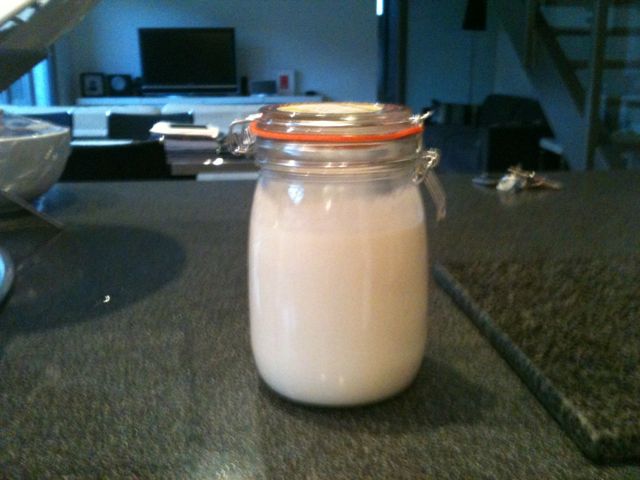For the last three months I have been experimenting with a fantastic cultured dairy product called Kefir. Kefir is a living culture, a complex symbiosis of more than 30 microflora that form grains or cauliflower-like structures in the milk. As this culture ferments the milk, these structures grow, creating new grains in the process. So real kefir from live culture is an ongoing self propagating process.
Kefir is a natural probiotic with many many health benefits. It has antibiotic and antifungul properties and has been used in the treatment of many conditions including allergies, IBS, metabolic disorders, poor digestion, osteoporosis, cancer, hypertension, HIV and heart disease to name just a few. In addition to this, it also contains many vitamins, minerals, amino acids and enzymes especially calciumm, phosphoros, magnesium, B2 and B12, Vitamins K, A & D. In my opinion, this is a true and authentic super food!!
So how can you get kefir in to your daily life?
You can purchase a kefir making kit online which usually includes a small portion of grains or you can source some grains from someone you know who is already cutivating it themselves. I was lucky enough to know someone who makes a lot of kefir and kindly shared some with me.
Making Kefir

Once you have your grains the process for making kefir is relatively easy. All you need is a glass mason jar, a wooden spoon for stirring the kefir and a strainer to separate the grains after the fermentation process is complete. Most websites specify that metal objects cannot be used around the sensitive grains however I always use a stainless steel strainer and it has not compromised my kefir or grains at all.
I always use raw unpasteurized goat’s or cow’s milk to make my kefir however, if you cannot access any you can use pasteurized dairy although the fantastic healthy enzymes present in raw milk have been removed through the pasteurisation process.
Use approximately 1 tablespoon of kefir grains to 500ml of liquid. Leave at room temperature for 12 – 24 hours, covered with cheesecloth or a teatowel, depending on the level of fermentation you are after. Personally I like my kefir quite sour and feel that it has more probiotic qualities when it is fermented longer so I leave it for the full 24 hour period. You can leave it longer than this although sometimes the milk starts to separate into curds and whey.

Once the kefir is fermeted it can live in the fridge for over a week although mine never lasts that long. I love to drink it as it comes or otherwise mix it with frozen berries or bananas, egg yolks and cacao to make a tasty smoothie. It’s a great way to improve digestion and get some healthy bacteria back into your system without spending a fortune on probiotic supplements.


Leave a Reply